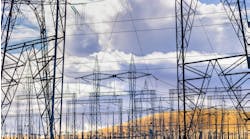Insulated vs. Isolated Grounding: Understanding the Difference
Is it insulated or isolated grounding? What is the difference? Sometimes a clash of terms can be found in various documents within the electrical industry.
Electricians commonly use the term “isolated ground” primarily because it is used in the National Electrical Code (NEC) [Sec. 250.146(D)]. Referencing the NEC provides an excellent description of this installation technique. Unfortunately, the term “isolated” has caused great confusion among electricians. The term does not capture the installation method of the equipment ground conductor (EGC). The misconception of isolated grounding has caused more problems than the installation was attempting to solve.
IEEE 1100-2005 Powering and Grounding Electronic Equipment provides an alternative definition to the practice of providing a separate EGC terminated at the location of the main bonding jumper (MBJ). An insulated grounding receptacle (IGR) is defined as “a receptacle in which the grounding terminal is purposely insulated from the receptacle mounting means, for the reduction of electrical noise (electromagnetic interference) on the grounding circuit. The receptacle grounding terminal shall be grounded by an insulated (isolated) EGC run with the circuit conductors” (IEEE 1100-2005 Section 2.2.39, p.8). This definition helps electricians understand that this EGC is not to be isolated from the grounding electrode system of the building, but instead remain insulated back to the location of the MBJ.
The improper installation of the IGR can actually cause more problems for sensitive electronic equipment. In many power quality investigations over the years where grounding is found to be the problem, “dirty” or “noisy” grounds are self-induced by bad installations. If an insulated ground system is not absolutely necessary, then it is always better to ensure your building grounding system is installed per the NEC, IEEE 142, and IEEE 1100. It is important to truly understand the electromagnetic interference sensitivity of equipment to apply the correct electrical installation. Keep in mind isolated grounding is attempting to achieve an insulated grounding system but must always be connected properly for fault current return to safely trip the circuit breaker.



